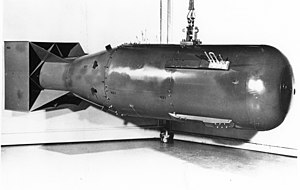 |
| A post-war Little Boy model |
Little Boy was developed by Lieutenant Commander Francis Birch's group of Captain William S. Parsons's Ordnance (O) Division at the Manhattan Project's Los Alamos Laboratory during World War II. Parsons flew on the Hiroshima mission as weaponeer. The Little Boy was a development of the unsuccessful Thin Man nuclear bomb. Like Thin Man, it was a gun-type fission weapon, but derived its explosive power from the nuclear fission of uranium-235. This was accomplished by shooting a hollow cylinder of uranium over another hollow enriched uranium cylinder by means of four silk bags of cordite powder. It contained 64 kg (141 lb) of enriched uranium, of which less than a kilogram underwent nuclear fission. Its components were fabricated at three different plants so that no one would have a copy of the complete design.
After the war ended, it was not expected that the inefficient Little Boy design would ever again be required, and many plans and diagrams were destroyed, but by mid-1946 the Hanford Site reactors were suffering badly from the Wigner effect, so six Little Boy assemblies were produced at Sandia Base. The Navy Bureau of Ordnance built another 25 Little Boy assemblies in 1947 for use by the nuclear-capable Lockheed P2V Neptune aircraft carrier aircraft. All the Little Boy units were withdrawn from service by the end of January 1951.
Naming
The names for all three atomic bomb design projects during World War II, Fat Man, Thin Man, and Little Boy, were created by Robert Serber, a former student of Los Alamos Laboratory director Robert Oppenheimer who worked on the Manhattan Project. According to Serber, he chose them based on their design shapes. The "Thin Man" was a long device, and the name came from the Dashiell Hammett detective novel and series of movies by the same name; the "Fat Man" was round and fat, and was named after Sydney Greenstreet's "Kasper Gutman" character in The Maltese Falcon. Little Boy would come last and was named after Elisha Cook, Jr.'s character in the same film, as referred to byHumphrey Bogart.
Development
Because uranium-235 was known to be fissionable, it was the first approach to bomb development pursued. The vast majority of the work came in the form of the isotope enrichment of the uranium necessary for the weapon, since uranium-235 makes up only 1 part in 140 of natural uranium. Enrichment was performed at Oak Ridge, Tennessee, where the electromagnetic separation plant, known as Y-12, became fully operational in March 1944. The first shipments of highly enriched uranium were sent to the Los Alamos Laboratory in June 1944
Most of the uranium necessary for the production of the bomb came from the Shinkolobwe mine and was made available thanks to the foresight of the CEO of the High Katanga Mining Union, Edgar Sengier, who had 1,000 long tons (1,000 t) of uranium ore transported to a New York warehouse in 1939. At least part of the 1,200 long tons (1,200 t) of uranium ore and uranium oxide captured by the Alsos Mission in 1944 and 1945 was used in the bomb.
The design was a development of the original Thin Man, a gun-type fission weapon 17 feet (5.2 m) long. Like the Fat Man, it was designed for plutonium but would have worked with enriched uranium as well. The Thin Man design was abandoned after experiments by Emilio G. Segrè and his P-5 Group at Los Alamos on the newly reactor-produced plutonium from Oak Ridge and the Hanford site showed that it contained impurities in the form of the isotope plutonium-240. This has a far higher spontaneous fission rate and radioactivity than thecyclotron-produced plutonium on which the original measurements had been made, and its inclusion in reactor-bred plutonium appeared unavoidable. This meant that the background fission rate of the plutonium was so high that it would be highly likely the plutonium would predetonate and blow itself apart in the initial forming of a critical mass.
In July 1944, almost all research at Los Alamos was reorganised redirected to the implosion-type plutonium weapon. Overall, responsibility for the uranium gun-type weapon was assigned to Captain William S. Parsons's Ordnance (O) Division. All the design, development and technical work at Los Alamos was consolidated under Lieutenant Commander Francis Birch's group.
In contrast to the plutonium implosion-type nuclear weapon, the uranium gun-type weapon was straightforward if not trivial to design. The concept was pursued so that in case of a failure to develop a plutonium bomb, it would still be possible to use the gun principle. The gun-type design henceforth had to work with enriched uranium only, and this allowed the Thin Man design to be greatly simplified. A high velocity gun was no longer required, and a simpler weapon could be substituted. This greatly shortened the weapon, so that it would fit into a B-29 bomb bay.
The design specifications were completed in February 1945, and contracts were let to build the components. Three different plants were used so that no one would have a copy of the complete design. The gun and breech were made by the Naval Gun Factory in Washington, D.C.; the target case and some other components were by the Naval Ordnance Plant in Center Line, Michigan; and the tail fairing and mounting brackets by the Expert Tool and Die Company in Detroit, Michigan. The bomb, except for the uranium payload, was ready at the beginning of May 1945. The uranium 235 projectile was completed on June 15, and the target on July 24. The target and bomb pre-assemblies (partly assembled bombs without the fissile components) left Hunters Point Naval Shipyard, California, on July 16 aboard the cruiser USS Indianapolis, arriving July 26. The target inserts followed by air on July 30.
While testing of the components was conducted, no full test of a gun-type nuclear weapon occurred before the Little Boy was dropped over Hiroshima. The only test explosionof a nuclear weapon concept had been of an implosion-type device employing plutonium as its fissionable material, and took place on July 16, 1945 at the Trinity nuclear test. There were several reasons for not testing a Little Boy type of device. Primarily, there was little uranium-235 as compared with the relatively large amount of plutonium which, it was expected, could be produced by the Hanford Site reactors. Additionally, the weapon design was simple enough that it was only deemed necessary to do laboratory tests with the gun-type assembly. Unlike the implosion design, which required sophisticated coordination of shaped explosive charges, the gun-type design was considered almost certain to work.
The danger of accidental detonation made safety a concern. Little Boy incorporated basic safety mechanisms, but an accidental detonation could still occur. Tests were conducted to see if a crash could drive the hollow "bullet" onto the "target" cylinder resulting in a massive release of radiation, or possibly nuclear detonation. These showed that this required an impact of 500 times that of gravity, which made it highly unlikely. There was still concern that a crash and a fire could trigger the explosives. If immersed in water, the uranium halves were subject to a neutron moderator effect. While this would not have caused an explosion, it could have created widespread radioactive contamination. For this reason, pilots were advised to crash on land rather than at sea.
Design
The Little Boy was 120 inches (300 cm) in length, 28 inches (71 cm) in diameter and weighed approximately 9,700 pounds (4,400 kg).The design used the gun method to explosively force a hollow sub-critical mass of uranium-235 and a solid target cylinder together into a super-critical mass, initiating a nuclear chain reaction. This was accomplished by shooting one piece of the uranium onto the other by means of four cylindrical silk bags of slotted-tube cordite powder. The bomb contained 64 kg (141 lb) of enriched uranium. Most was enriched to 89% but some was only 50% uranium-235, for an average enrichment of 80%. of which less than a kilogram underwentnuclear fission, and of this mass only 0.6 g (0.021 oz) was transformed into a different type of energy, initially kinetic energy, then heat and radiation.
Assembly details
Inside the weapon, the uranium-235 material was divided into two parts, following the gun principle: the "projectile" and the "target". The projectile was a hollow cylinder with 60% of the total mass (38.5 kg (85 lb)). It consisted of a stack of 9 uranium rings, each 6.25-inch (159 mm) in diameter with a 4-inch (100 mm) bore in the center, and a total length of 7 inches (180 mm), pressed together into the front end of a thin-walled projectile 413 millimetres (16.25 in) long. Filling in the remainder of the space behind these rings in the projectile was a tungsten carbide disc with a steel back. At ignition, the projectile slug was pushed 42 inches (1,100 mm) along the 72-inch (1,800 mm) long, 6.5-inch (170 mm) smooth-bore gun barrel. The slug "insert" was a 4 inches (100 mm) cylinder, 7 inches (180 mm) in length with a 25 millimetres (1 in) axial hole. The slug comprised 40% of the total fissile mass (25.6 kg (56 lb)). The insert was a stack of 6 washer-like uranium discs somewhat thicker than the projectile rings that were slid over a 1 inch (25 mm) rod. This rod then extended forward through the tungsten carbide tamper plug, impact-absorbing anvil, and nose plug backstop eventually protruding out the front of the bomb casing. This entire target assembly was secured at both ends with locknuts.
When the hollow-front projectile reached the target and slid over the target insert, the assembled super-critical mass of uranium would be completely surrounded by a tamper and neutron reflector of tungsten carbide and steel, both materials having a combined mass of 2,300 kg (5,100 lb). Neutron initiators at the base of the projectile were activated by the impact.
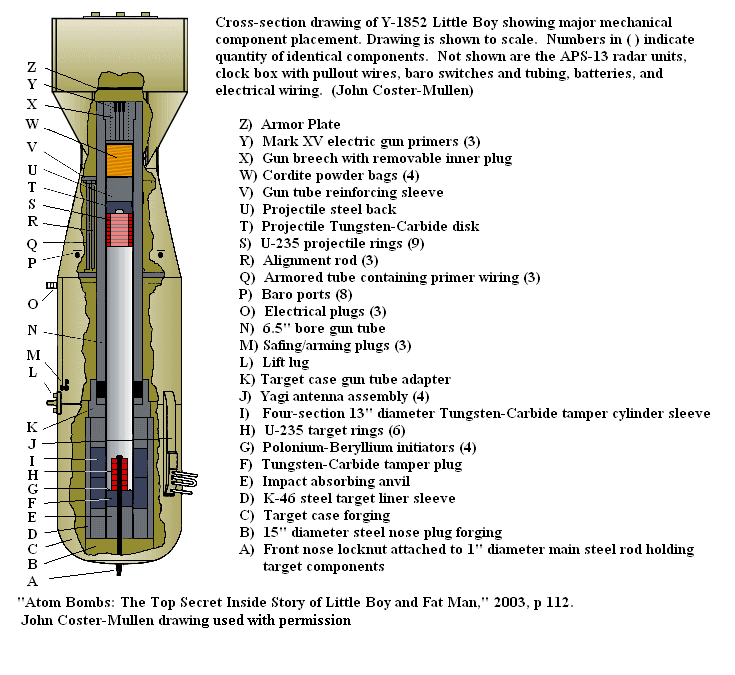
Counter-intuitive design
For the first fifty years after 1945, every published description and drawing of the Little Boy mechanism assumed that a small, solid projectile was fired into the center of a larger target. However, critical mass considerations dictated that in Little Boy the larger, hollow piece would be the projectile. The assembled fissile core had more than two critical masses of uranium 235. This required one of the two pieces to have more than one critical mass. A hole in the center of the larger mass dispersed the mass and increased the surface area, allowing more fission neutrons to escape, thus preventing a premature chain reaction.
It was also important for the larger piece to have minimal contact with the neutron-reflecting tungsten carbide tamper until detonation, thus only the projectile's back end was in contact with tungsten carbide. The rest of the tungsten carbide surrounded the sub-critical mass target cylinder (called the "insert" by the designers) with air space between it and the insert. This arrangement packs the maximum amount of fissile material into a gun-assembly design.
Fuse system
The bomb employed a fusing system that was designed to detonate the bomb at the most destructive altitude. Calculations showed that for the largest destructive effect, the bomb should explode at an altitude of 580 metres (1,900 ft). The resultant fuse design was a three-stage interlock system:
- A timer ensured that the bomb would not explode until at least fifteen seconds after release, one-quarter of the predicted fall time, to ensure safety of the aircraft. The timer was activated when the electrical pull-out plugs connecting it to the airplane pulled loose as the bomb fell, switching it to internal (24V battery) power and starting the timer. At the end of the 15 seconds the radar altimeters were powered up and responsibility was passed to the barometric stage.
- The purpose of the barometric stage was to delay activating the radar altimeter firing command circuit until near detonation altitude. A thin metallic membrane enclosing a vacuum chamber (a similar design is still used today in old-fashioned wall barometers) was gradually deformed as ambient air pressure increased during descent. The barometric fuse was not considered accurate enough to detonate the bomb at the precise ignition height, because air pressure varies with local conditions. When the bomb reached the design height for this stage (reportedly 2,000 metres, 6,600 ft) the membrane closed a circuit, activating the radar altimeters. The barometric stage was added because of a worry that external radar signals might detonate the bomb too early.
- Two or more redundant radar altimeters were used to reliably detect final altitude. When the altimeters sensed the correct height, the firing switch closed, igniting the three BuOrd Mk15, Mod 1 Navy gun primers in the breech plug, which set off the charge consisting of four silk powder bags each containing two pounds of WM slotted-tube cordite. This launched the uranium projectile towards the opposite end of the gun barrel at an eventual muzzle velocity of 300 metres per second (980 ft/s). Approximately 10 milliseconds later the chain reaction occurred, lasting less than 1 microsecond. The radar altimeters used were modified U.S. Army Air Corps APS-13 fighter tail warning radars, nicknamed "Archie", to warn a pilot of another plane approaching from behind.
Rehearsals
The Little Boy pre-assemblies were designated L-1, L-2, L-3, L-4, L-5, L-6, L-7 and L-11. L-1, L-2, L-5 and L-6 were expended in test drops. The first drop test was conducted with L-1 on July 23, 1945. It was dropped over the sea near Tinian in order to test the radar altimeter by the B-29 later known as Big Stink, piloted by Colonel Paul W. Tibbets, the commander of the 509th Composite Group. Two more drop tests over the sea were made on July 24 and 25, using the L-2 and L-5 units in order to test all components. Tibbets was the pilot for both missions, but this time the bomber used was the one subsequently known as Jabit. L-6 was used a dress rehearsal on July 29. The B-29 Next Objective, piloted by Major Charles W. Sweeney, flew to Iwo Jima, where emergency procedures for loading the bomb onto a standby aircraft were practiced. This rehearsal was repeated on July 31, but this time L-6 was reloaded onto a different B-29, Enola Gay, piloted by Tibbets, and the bomb was test dropped near Tinian. L-11 was the assembly used for the Hiroshima bomb.
The bombing of Hiroshima
Parsons, the Enola Gay's weaponeer, was concerned about the possibility of an accidental detonation if the plane crashed in takeoff, so he decided not to load the four cordite powder bags into the gun breech until the aircraft was in flight. Parsons and his assistant, Second Lieutenant Morris R. Jeppson, made their way into the bomb bay along the narrow catwalk on the port side. Jeppson held a flashlight while Parsons disconnected the primer wires, removed the breech plug, inserted the powder bags, replaced the breech plug, and reconnected the wires. Before climbing to altitude on approach to the target, Jeppson switched the three safety plugs between the electrical connectors of the internal battery and the firing mechanism from green to red. The bomb was then fully armed. Jeppson monitored the bomb's circuits.
The bomb was dropped at approximately 08:15 (JST) August 6, 1945. After falling for 44.4 seconds, the time and barometric triggers started the firing mechanism. The detonation happened at an altitude of 1,968 ± 50 feet (600 ± 15 m). It was less powerful than the Fat Man, which was dropped on Nagasaki, but the damage and the number of victims at Hiroshima were much higher, as Hiroshima was on flat terrain, while the hypocenter of Nagasaki lay in a small valley. According to figures published in 1945, 66,000 people were killed as a direct result of the Hiroshima blast, and 69,000 were injured to varying degrees.
The exact measurement of the yield was problematic, since the weapon had never been tested. President Harry S Truman officially announced that the yield was 20 kilotons of TNT (84 TJ). This was based on Parsons's visual assessment that the blast was greater than what he had seen at the Trinity nuclear test. Since that had been estimated at 18 kilotons of TNT (75 TJ), speech writers rounded up to 20 kilotons. Further discussion was then suppressed, for fear of lessening the impact of the bomb on the Japanese. Data had been collected by Luis Alvarez, Harold Agnew and Lawrence H. Johnston on the instrument plane The Great Artiste but this was not used to calculate the yield at the time.
After hostilities ended, a survey team from the Manhattan Project that included William Penney, Robert Serber and George T. Reynoldswas sent to Hiroshima to evaluate the effects of the blast. From evaluating the effects on objects and structures, Penney concluded that the yield was 12 ± 1 kilotons. Later calculations based on charring pointed to a yield of 13 to 14 kilotons. In 1953, Frederick Reines calculated that the yield as 13 kilotons.This figure became the official yield.
In 1962, scientists at Los Alamos created a mockup of Little Boy known as "Ichiban" in order to answer some of the unanswered questions, but it failed to clear up all the issues. In 1982, Los Alamos created a replica Little Boy from the original drawings and specifications. This was then tested with enriched uranium but in a safe configuration that would not cause a nuclear explosion. A hydraulic lift was used to move the projectile, and experiments were run to assess neutron emission. Based on this and the data from The Great Artiste, the yield was estimated at 16.6 ± 0.3 kilotons. After considering many estimation methods, a 1985 report concluded that the yield was 15 kilotons ± 20%.
When 1 pound (0.45 kg) of uranium-235 undergoes complete fission, the yield is 8 kilotons. The 16 kiloton yield of the Little Boy bomb was therefore produced by the fission no more than 2 pounds (0.91 kg) of uranium-235, out of the 141 pounds (64 kg) in the pit. The remaining 139 pounds (63 kg), 98.5% of the total, contributed nothing to the energy yield.
Physical effects of the bomb
After being selected in April 1945, Hiroshima was spared conventional bombing to serve as a pristine target, where the effects of a nuclear bomb on an undamaged city could be observed. While damage could be studied later, the energy yield of the untested Little Boy design could be determined only at the moment of detonation, using instruments dropped by parachute from a plane flying in formation with the one that dropped the bomb. Radio-transmitted data from these instruments indicated a yield of about 15 kilotons.
Comparing this yield to the observed damage produced a rule of thumb called the 5 psi lethal area rule. The number of immediate fatalities will approximately equal the number of people inside the area where the shock wave carries an over pressure of 5 psi or greater. At Hiroshima, that area was 3.5 kilometres (2.2 mi) in diameter.
The damage came from three main effects: blast, fire, and radiation.
Blast
The blast from a nuclear bomb is the result of X-ray-heated air (the fireball) sending a shock/pressure wave in all directions at a velocity greater than the speed of sound (aka, the "Mach-Stem"), analogous to thunder generated by lightning. Knowledge about urban blast destruction is based largely on studies of Little Boy at Hiroshima. Nagasaki buildings suffered similar damage at similar distances, but the Nagasaki bomb detonated 3.2 kilometres (2.0 mi) from the city center over hilly terrain that was partially bare of buildings.
In Hiroshima almost everything within 1.6 kilometres (1.0 mi) of the point directly under the explosion was completely destroyed, except for about 50 heavily reinforced, earthquake-resistant concrete buildings, only the shells of which remained standing. Most were completely gutted, with their windows, doors, sashes, and frames ripped out. The perimeter of severe blast damage approximately followed the 5 psi contour at 1.8 kilometres (1.1 mi).
Later test explosions of nuclear weapons with houses and other test structures nearby confirmed the 5 psi overpressure threshold. Ordinary urban buildings experiencing it will be crushed, toppled, or gutted by the force of air pressure. The picture at right shows the effects of a nuclear-bomb-generated 5 psi pressure wave on a test structure in Nevada in 1953.
A major effect of this kind of structural damage was that it created fuel for fires that were started simultaneously throughout the severe destruction region.
Fire
The first effect of the explosion was blinding light, accompanied by radiant heat from the fireball. The Hiroshima fireball was 370 metres (1,200 ft) in diameter, with a surface temperature of 6,000 °C (10,830 °F). Near ground zero, everything flammable burst into flame. One famous, anonymous Hiroshima victim, sitting on stone steps 260 metres (850 ft) from the hypocenter, left only a shadow, having absorbed the fireball heat that permanently bleached the surrounding stone. Simultaneous fires were started throughout the blast-damaged area by fireball heat and by overturned stoves and furnaces, electrical shorts, etc. Twenty minutes after the detonation, these fires had merged into a firestorm, pulling in surface air from all directions to feed an inferno which consumed everything flammable.
The Hiroshima firestorm was roughly 3.2 kilometres (2.0 mi) in diameter, corresponding closely to the severe blast damage zone. (See the USSBS map, right.) Blast-damaged buildings provided fuel for the fire. Structural lumber and furniture were splintered and scattered about. Debris-choked roads obstructed fire fighters. Broken gas pipes fueled the fire, and broken water pipes rendered hydrants useless. At Nagasaki, the fires failed to merge into a single firestorm, and the fire-damaged area was only one fourth as great as at Hiroshima, due in part to a southwest wind that pushed the fires away from the city.
As the map shows, the Hiroshima firestorm jumped natural firebreaks (river channels), as well as prepared firebreaks. The spread of fire stopped only when it reached the edge of the blast-damaged area, encountering less available fuel.
Accurate casualty figures are impossible to determine, because many victims were cremated by the firestorm, along with all record of their existence. The Manhattan Project report on Hiroshima estimated that 60% of immediate deaths were caused by fire, but with the caveat that "many persons near the center of explosion suffered fatal injuries from more than one of the bomb effects." In particular, many fire victims also received lethal doses of nuclear radiation.
Radiation
Local fallout is dust and ash from a bomb crater, contaminated with radioactive fission products. It falls to earth downwind of the crater and can produce, with radiation alone, a lethal area much larger than that from blast and fire. With an air burst, the fission products rise into the stratosphere, where they dissipate and become part of the global environment. Because Little Boy was an air burst 580 metres (1,900 ft) above the ground, there was no bomb crater and no local radioactive fallout.
However, a burst of intense neutron and gamma radiation came directly from the fireball. Its lethal radius was 1.3 kilometres (0.8 mi), covering about half of the firestorm area. An estimated 30% of immediate fatalities were people who received lethal doses of this direct radiation, but died in the firestorm before their radiation injuries would have become apparent. Over 6,000 people survived the blast and fire, but died of radiation injuries. Among injured survivors, 30% had radiation injuries from which they recovered, but with a lifelong increase in cancer risk.To date, no radiation-related evidence of heritable diseases has been observed among the survivors' children.
Conventional weapon equivalent
Although Little Boy exploded with the energy equivalent of 16,000 tons of TNT, the Strategic Bombing Survey estimated that the same blast and fire effect could have been caused by only 2,100 tons of conventional bombs: "220 B-29s carrying 1,200 tons of incendiary bombs, 400 tons of high-explosive bombs, and 500 tons of anti-personnel fragmentation bombs." Since the target was spread across a two-dimensional plane, the vertical component of a single spherical nuclear explosion was largely wasted. A cluster bomb pattern of smaller explosions would have been a more energy-efficient match to the target.
Post-war
When the war ended, it was not expected that the inefficient Little Boy design would ever again be required, and many plans and diagrams were destroyed. However, by mid-1946 the Hanford Site reactors were suffering badly from the Wigner effect. Faced with the prospect of no more plutonium for new cores and no more polonium for the initiators for the cores that had already been produced, Groves ordered that a number of Little Boys be prepared as an interim measure until a cure could be found. No Little Boy assemblies were available, and no comprehensive set of diagrams of the Little Boy could be found, although there were drawings of the various components, and stocks of spare parts.
At Sandia Base, three Army officers, Captains Albert Bethel, Richard Meyer and Bobbie Griffin attempted to re-create the Little Boy. They were supervised by Harlow W. Russ, an expert on Little Boy who served with Project Alberta on Tinian, and was now leader of the Z-11 Group of the Los Alamos Laboratory's Z Division at Sandia. Gradually, they managed to locate the correct drawings and parts, and figured out how they went together. Eventually, they built six Little Boy assemblies. While the casings, barrels and components were tested, no enriched uranium was supplied for the bombs. By early 1947, the problems caused by the Wigner effect was on its way to solution, and the three officers were reassigned.
The Navy Bureau of Ordnance built 25 Little Boy assemblies in 1947 for use by the nuclear-capable Lockheed P2V Neptune aircraft carrier aircraft. Components were produced by the Naval Ordnance Plants in Pocatello, Idaho, and Louisville, Kentucky. Enough fissionable material was available by 1948 to build ten projectiles and targets, although there were only enough initiators for six. All the Little Boy units were withdrawn from service by the end of January 1951.

This work is licensed under a Creative Commons Attribution-ShareAlike 3.0 Unported License.




 00:14
00:14
 Planet Worldwide
Planet Worldwide

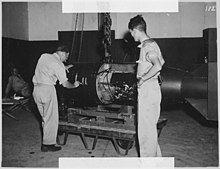





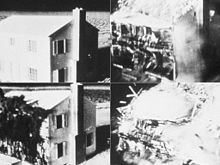
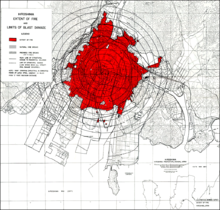
 Posted in:
Posted in:
0 comments:
Post a Comment